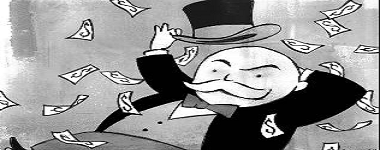Are interest rates too high stimulate the economy? Your initial reaction is likely that with the Federal Reserves’ current zero interest rate policy interest rates cannot go any lower.

Â
Hoisington Investment Management 2Q2014 Review and Outlook stated:
…. Knut Wicksell (1851-1926) noted that the natural rate of interest, a level that does not tend to slow or accelerate economic activity, should approximate the growth rate of nominal GDP. Interest rates higher than the top-line growth rate of the economy, which is the case today, would mean that resources from the income stream of the economy would be required to pay for the higher rate of interest, thus slowing the economy. Wicksell preferred to use, not a risk free rate of interest such as thirty-year treasury bonds, but a business rate of interest such as BAA corporates.

As chart one attests, interest rates below nominal GDP growth helps to accelerate economic activity and vice versa. Currently the higher interest rates are retarding economic growth, suggesting the next move in interest rates is lower.
To put the 2.9% change in nominal GDP over the past four quarters in perspective, it is below the entry point of any post-war recession. Even adjusting for inflation the average four-quarter growth rate in real GDP for this recovery is 1.8%, well below the 4.2% average in all of the previous post-war expansions.
It was the graph which caught my eye – as it did not prove to me that “interest rates below nominal GDP growth helps to accelerate economic activity and vice versa”,although that is a general broad generalization of the correlation displayed.  I guess that is what I was supposed to see: Prior to 1980 GDP was trending up while bond rates generally below GDP.Â
What I did see was that interest rates and inflation (often weakly) correlated to GDP in certain periods of time.  What my eyeball scan picked up were the following possible correlations (call them short-term, if you will, as opposed to the longer-term trend correlations):

